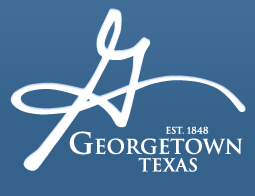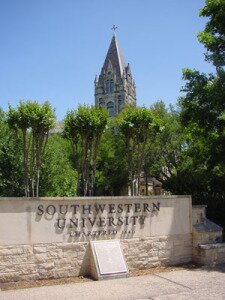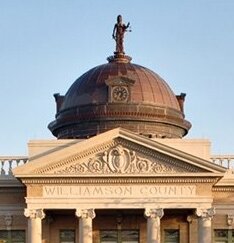Past. Present. Future.
 Gone are the dusty streets and board sidewalks of our frontier days, as well as the rows of whimsical picket fences of the town's Victorian heyday. But the tree-lined, inner neighborhoods and lovingly restored-Square continue to lend the charm of yesteryear to this, Williamson Country's bustling seat of government.
Gone are the dusty streets and board sidewalks of our frontier days, as well as the rows of whimsical picket fences of the town's Victorian heyday. But the tree-lined, inner neighborhoods and lovingly restored-Square continue to lend the charm of yesteryear to this, Williamson Country's bustling seat of government.
People of diverse ethnic and geographical origins have been attracted to Georgetown - either to visit or to put down permanent roots - ever since the town's founding by early developers under a live oak tree in 1848.
Prominently sited on high ground near the San Gabriel River, Georgetown still provides the same natural resources which encouraged early settlers to make their homes here. And Georgetown continues to offer the commercial, governmental, cultural and educational opportunities which stimulated later residents to share in the community's superior quality of life.
The economy of Georgetown during its settlement period was heavily dependent upon agriculture. U.S. census records of 1850, 1860 and 1870, for example, reveal that most area residents worked in farm-related jobs. These farms were generally small, with farmers growing such staple crops as wheat and corn to ensure their self-sufficiency. The majority of these early settlers were Anglos who had migrated from the Southern states; Swedes comprised the largest European immigrant group.
Development was temporarily hampered by the general economic chaos of the Civil War era. Following Reconstruction, however, Georgetown experienced an era of rapid growth that transformed it economically, culturally and architecturally. The small pioneer village with an estimated population of 320 in 1870 would boast an impressive 2,790 residents by 1900, an increase of over 800 percent.
Four factors were primarily responsible for the exciting burst of energy which the already-flourishing county seat experienced during its "golden age," 1880-1910: the cattle industry, the cotton industry, the railroad industry and the University.
Although the local cattle boom was relatively short-lived (ending by the mid-1880's), it was responsible for much of Georgetown's early rough-and-tumble cowtown flavor. Georgetown was fortuitously located along the feeder routes which many South Texas cattle drives used on the way to the main cattle market trails. In addition, the open ranch land west of town was ideal for raising livestock, and several successful cattlemen operated in and around Georgetown.
The arrival of the railroad in 1878 had a more profound and lasting impact. Fearing the consequences if the city were not linked with the new International and Great Northern Railroad, the county's first major line, many of the town's leading citizens financed the Georgetown Tap Line. Georgetown residents could then obtain an unprecedented variety of merchandise and building supplies, from pianos and sewing machines to pressed metal trim and leaded glass windows.
Furthermore, the ease of crop shipment and the availability of advanced farming implements stimulated Georgetown to become a major cotton-producing center. Related industries, such as an oil mill and cotton gin, were soon established. These and other manufacturing enterprises, including an ice plant, flour mill and furniture company, were all located at the west end of town near the railroad tracks.
The new prosperity motivated residents to forsake their unassuming log or frame buildings for more substantial and stylish shops and dwellings. This building demand quickly spurred establishment of local lumber mills and construction companies, including the well-regarded Belford Lumber Company.
 Of equal significance to Georgetown's economic, cultural and architectural development was the decision by the Texas conferences of the Methodist Church to consolidate their schools across the state into one central location. Recognizing the benefits that this reorganized university could bring to the community, Georgetown leader’s successfully lobbied for Texas University (later renamed Southwestern University) to open here in 1873. The city thereby emerged as an early education center of Texas, adding to its population not only families seeking quality instruction for their children but also an impressive group of educators for the faculty. Several handsome ecclesiastical buildings were also erected in the predominantly protestant community, attesting to the community's confidence in Georgetown and quest for permanence.
Of equal significance to Georgetown's economic, cultural and architectural development was the decision by the Texas conferences of the Methodist Church to consolidate their schools across the state into one central location. Recognizing the benefits that this reorganized university could bring to the community, Georgetown leader’s successfully lobbied for Texas University (later renamed Southwestern University) to open here in 1873. The city thereby emerged as an early education center of Texas, adding to its population not only families seeking quality instruction for their children but also an impressive group of educators for the faculty. Several handsome ecclesiastical buildings were also erected in the predominantly protestant community, attesting to the community's confidence in Georgetown and quest for permanence.
After the turn of the 20th century, Georgetown continued to prosper, although less dramatically than during its robust Victorian heyday. Promotional publications of that day boasted that the city's desirable attributes included "nine churches, with a membership of 2,300 … no saloons, no gambling dens, or any other attendant evils."
 An imposing Neoclassical-style Courthouse dominated the downtown square by 1910. Roads were later paved to accommodate the increasing number of automobiles. Telephone service, indoor plumbing, electricity, gas heat and other amenities became available. Orderly rows of comfortable and spacious bungalows dotted the streetscapes in newer neighborhoods.
An imposing Neoclassical-style Courthouse dominated the downtown square by 1910. Roads were later paved to accommodate the increasing number of automobiles. Telephone service, indoor plumbing, electricity, gas heat and other amenities became available. Orderly rows of comfortable and spacious bungalows dotted the streetscapes in newer neighborhoods.
The Great Depression stifled the city's growth for a time, with the population increasing by less than 100 in the entire decade of the 1930's. After the Depression years, however, Georgetown enjoyed a period of relative stability. The composition of the neighborhoods and downtown commercial district changed very little in succeeding years, with most new construction during the 1940's and 1950's taking place in the fields south of the University.
The preservation movement of the 1970’s, therefore, found "old Georgetown" essentially intact. Long-time residents soon had willing allies in their efforts to preserve the local architectural and cultural legacy, for the community’s charm and proximity to the state capital quickly lured preservationists, new business, commuter residents and retirees to settle here, as other "migrants" had before them.
Although new development is gradually encircling the original town site and its later historic additions, contemporary Georgetown continues to manifest its respect for its heritage and its commitment to preservation. A local historic ordinance protects the downtown Square, while zoning ordinances discourage commercial encroachment that would destroy the integrity of older residential areas. Historical designations have been awarded by the State of Texas and by the National Register of Historic Places to individual structures, sites and neighborhoods throughout the city.
Representatives from various civic groups continue to work with city and county officials in mapping out basic preservation strategies through the city's Preservation Plan.
In 1982, Georgetown was selected by the National Trust for Historic Preservation as one of six Texas cities to participate in the Main Street Program. This program relied on and continues to rely on local resources through public and private partnerships. The self-help program combines economic development, tourism, historic preservation and promotion.
In recognition of its ongoing commitment to historic preservation, Georgetown was among a handful of Texas cities selected in 1986 to participate in the federal government's fledgling Certified Local Government program. As a "CLG" city, Georgetown is eligible to receive financial and technical assistance from the Texas Historical Commission and is charged with maintaining a local historic preservation committee and with enforcing state and local preservation laws.
in 1997, Georgetown was the first Texas city to be named a Great American Main Street City, the highest honor given by the National Trust. Renovations and new public building projects continue in the downtown commercial district making it a vibrant and unique place today.
Over the years, the success of this project would not have been possible without a strong commitment from the city and county government as well as from the private and community at large.
Through its education programs, preservation projects and tourism-related activities, the Georgetown Heritage Society challenges citizens to safeguard the unique architectural assets, natural resources and cultural traditions which set Georgetown apart from other Central Texas communities.
